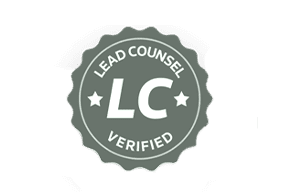
Austin Domestic Violence & Abuse Lawyers
Helping You Stay Safe in Your Time of Need
Note: If you or a loved one are experiencing domestic violence or abuse, please contact the National Domestic Violence Hotline by calling 1-800-700 or texting 1-800-787-3224, respectively. Alternatively, Austinites may want to visit the Stop Abuse for Everyone (SAFE) organization's website, or this webpage provided by the local Austin government, to learn more about domestic violence and abuse resources located specifically in the greater Austin area.
Suffering from domestic violence or abuse can be incredibly emotionally challenging and traumatizing. For individuals in abusive situations, escaping the cycle of abuse and rebuilding a life away from the abuse can seem impossible.
At Cofer & Connelly, PLLC, our Austin domestic violence attorneys work with clients to help them secure protective orders against their abusers, ensuring their safety and enabling them to live a happier, healthier life.
To schedule a consultation with our team, contact us online or via phone at (512) 991-0576.
What is Domestic Violence?
Domestic violence or family violence is broadly defined and includes any act by one family or household member intended to cause harm. Household members include individuals living together in the same dwelling, regardless of whether they are related by blood or marriage.
Domestic violence can be charged as assault, which ranges from a Class A misdemeanor (for causing bodily injury) to a first-degree felony (for aggravated assault involving serious bodily injury or use of a deadly weapon). If an individual commits two or more acts of family violence within 12 months, they can be charged with this third-degree felony.
Under federal law, individuals convicted of domestic violence offenses or subject to certain protective orders are prohibited from possessing firearms. Texas law aligns with these restrictions, making it illegal for individuals under such orders or convictions to possess firearms.
Common forms of domestic violence include:
- Physical Abuse: This involves actions like hitting, slapping, or kicking a partner. It can also include choking, burning, or using weapons to inflict harm. Preventing someone from seeking medical help is another form of physical abuse.
- Sexual Abuse: This includes forcing a partner to engage in sexual activities against their will. It can involve performing acts that the partner finds degrading or using manipulation and threats to coerce sex. Sexual abuse also includes exploiting a partner sexually or using sexual insults.
- Emotional or Psychological Abuse: This form of abuse involves constant criticism, humiliation, or name-calling to undermine a partner's self-esteem. It can also include isolating the victim from friends and family, making threats, and gaslighting to make the victim question their reality.
- Economic or Financial Abuse: This includes controlling or withholding access to financial resources and forbidding a partner from working or attending school. It can also involve sabotaging employment opportunities and creating financial dependency by stealing or misusing money or property.
- Digital Abuse: This involves using technology to monitor or harass a partner, such as sending threatening messages or tracking their location. It can also include demanding access to personal devices or online accounts and engaging in cyberbullying.
- Stalking: Stalking behaviors include following or spying on the victim and repeatedly sending unwanted messages or gifts. It can also involve showing up uninvited at the victim’s home or workplace, damaging property, and making threats to harm the victim or their loved ones.
Texas Domestic Violence Laws
Texas law mandates that law enforcement officers must arrest individuals if they have probable cause to believe that the person has committed an act of family violence. Officers are also required to provide victims with information on their rights and available resources, including protective orders and shelters.
Domestic violence can be charged as assault, which ranges from a Class A misdemeanor (for causing bodily injury) to a first-degree felony (for aggravated assault involving serious bodily injury or use of a deadly weapon).
Texas provides various resources and support for domestic violence victims, including hotlines, shelters, counseling services, and legal assistance. Victims can access these resources through organizations like the Texas Council on Family Violence and local domestic violence programs.
How Do I Get a Protective Order in Texas?
The best way for individuals in an abusive relationship to get protection is by filing for a protective order.
To file for a protective order, you'll need to visit your county district attorney's office or courthouse. If you're in an abusive relationship, you can call your local police department and a law enforcement professional (LEP) will pick you up and escort you to the courthouse.
It may be possible to find protective order forms online, but some courts have their own forms they prefer civilians to use, so checking in with your local court clerk and using the forms they provide is probably your best option.
You'll need to fill out a variety of forms to file a protective order. Those forms include information about the petitioner (the person filing for the protective order) and the alleged abuser. A domestic violence attorney can help you fill out the forms accurately and work with you to build a strong case for why you need a protective order.
Once you're done filling out the forms, a judge will examine them. If the judge determines the petitioner is in immediate danger of suffering from further violence or abuse, they may administer a temporary protection order that lasts up to 20 days. If that happens, an LEP may escort the petition back to their residence and remove the alleged abuser. Temporary protective orders help protect petitioners while the court holds official hearings for a more permanent protective order.
After the judge decides whether to proceed with the protective order, process of serving the alleged abuser with notice of the order begins. An LEP typically serves the alleged abuser.
Once the other party is notified of the protective order, the court holds hearings to determine whether to issue a more permanent protective order.
The court uses the hearings to determine whether a more permanent protective order is warranted. If the court decides the petitioner's case has merit, it will issue a longer-lasting protective order. Most protective orders last around two years, but it is possible to get a permanent protective order if the judge thinks the case warrants it.
What Are the Signs of Abuse?
If you think you or a loved one may be in an abusive or violent relationship but aren't completely sure, understanding common behaviors associated with domestic abuse and violence can help you make the correct decision.
Abusive partners often display the following characteristics:
- They control their partner's finances or social interactions. This includes monitoring bank accounts or preventing their partner from having a separate account, checking their partner's media consumption, and preventing their partner from seeing other people.
- They consistently put their partner down. Abusers often try to lower their partner's self-esteem to encourage co-dependence.
- They blame their partner for abusive behavior. Abusers routinely tell their victims that they did something to instigate the abuse, justifying their actions.
- They threaten to hurt themselves or their partner if the partner wants to leave the relationship.
Most abusers follow a "cycle" of abuse. The cycle of abuse often looks something like this:
- The honeymoon phase. Abusers are often charismatic or charming when they first meet their partner, going above and beyond to create the "perfect" relationship.
- The build-up. Once the relationship is established, abusers will start trying to find ways to justify their abuse and establish further control over their partner. This may include things like accusing their partner of infidelity without basis and taking control of their partner's finances.
- The violent incident. The abuser usually slowly ramps up until they commit an act of abuse. The victim does not have to be physically harmed to experience abuse. Abusers who engage in emotional abuse (like gaslighting) or destroying objects near their partner are still engaging in abusive behavior.
- Remorseful behavior. Abusers often show remorse after committing an act of abuse, claiming that they'll "change" and begging for forgiveness.
- The honeymoon phase. To try and reap their partner's forgiveness, abusers may make a show of returning to their "old ways," acting charming and caring. Once this phase kicks off, the cycle of abuse begins again.
Incidents of abuse often escalate in severity. For this reason, it's crucial that victims of abuse immediately seek help from the legal system as soon as abuse occurs, even if the incident seems minor or the abuser seems remorseful.
At Cofer & Connelly, PLLC, we work with victims of domestic violence and abuse to help them receive the support they deserve and file for protective orders or take other legal measures against their abusers.
If you're interested in scheduling a consultation with our team, contact us online or via phone at (512) 991-0576.

-
"Excellent all around. Highly recommend."W. N.
-
"I am eternally grateful for all of the efforts they put in to go above and beyond for everyone they help."Former Client
-
"They really listen to and care about their client's needs and consistently fight for the best outcome! I am eternally grateful for all of the effort they put in to go above and beyond for everyone they help."C.D.
-
103 Years of Experience
-
32,000 Cases
-
357 Trials





















